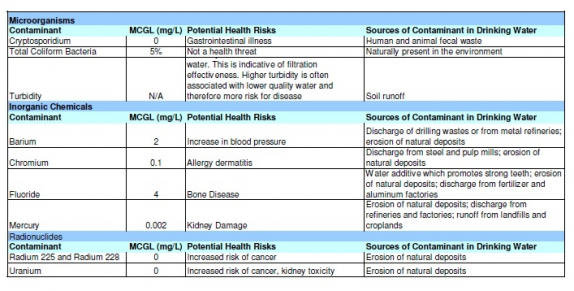Water Access:
Where Does Water Come From?
Although 70% of Earth is covered by water an astounding 97% of that is salt water. The remaining 3% is fresh water whose use is split between households, industries, agriculture, and more. Fresh water is available from a variety of sources such as ground water, surface water, desalinization, and frozen water.
Ground Water:
Water is located underground beneath the earth’s surface in between rock and soil. Aquifers filter the water through sand and rock and naturally clean it before it is treated for consumption.
Surface Water:
Examples of surface water resources are lakes and rivers. Surface water is naturally replenished by precipitation but is also depleted due to evaporation and through discharge into the ocean. Glacier runoff is also considered as a source of surface water.
Desalinization:
As previously mentioned, much of the water available to us is salt water. Desalinization is a process through which salt and minerals are removed from salt water to create a fresh water supply.
Frozen Water:
Of the 3% of fresh water available for use, two-thirds of the supply is trapped in frozen glaciers, polar ice caps, and icebergs.
Water Quality, Purification and Sanitation:
The following table provides a sample of national standards for public water systems. The maximum contaminant level goal (MCLG) is the level of a contaminant in drinking water below which there is no known or expected risk to health. Visit the EPA website for more information.

More About Water Technologies
Desalination is a general term used to describe the process through which salt water is converted into fresh water through the removal of salt and minerals. The resulting product is used for consumption by households and industries such as agriculture.
One popular method of desalination is membrane filtration where an artificial membrane is used to separate mixtures in a pressure driven process. The artificial membrane acts as a strainer to capture unwanted particles.
Reverse osmosis is a process that is similar to membrane filtration. A selective membrane is also used to filter water and the rate of filtration is related to solute concentration, water flux rate, and pressure.
Water can also be purified through chemical treatment. Chlorine and iodine are two chemicals commonly used to treat and disinfect water. However, chemical treatment is not a preferred method because it leaves water with an unpleasant taste.
The ultraviolet water disinfection process is another option and does not require the use of chemicals. Instead, radiation is used to kill harmful microorganisms and parasites that infect water.
Industrial Water Treatment
What happens to water after you use it to brush your teeth, wash the dishes, or flush your toilet? Households are not the only ones who rely on water. Commercial businesses, agriculture, and factories also use water every day. After water is used it is referred to as wastewater. This wastewater must be industrially treated before it is recycled back into the environment.
Why treat it? After water has been consumed in any way it is guaranteed to be teeming with bacteria, chemicals, and other foreign material. Releasing it back into our water sources is not good for the environment or for our health. Fisheries, farmers, wild life, and humans all depend on clean water so it is essential that it be treated for contaminants.
How? Industrial water treatment is a multi-step process that consists of pre-treatment, primary treatment, and secondary treatment.
- Pre-treatment:
- This phase uses screens to remove large contaminants such as rocks, sand, trash, and other sediment.
- Primary treatment:
- The wastewater flows into large clarifying tanks that allow byproducts such as fat and grease to float to the top. These contaminants are skimmed, collected, and disposed.
- Secondary treatment:
- A filter is used to remove residual matter, such as remaining organic matter. Aerobic biological processes are used to eliminate contaminants from soap, detergent, food waste, and more.
This Industrial Water Treatment Handbook is a great technical resource to use to learn more.
The EPA also provides technology reports with links to emerging technologies and nutrient removal, among other wastewater-related treatment topics.
